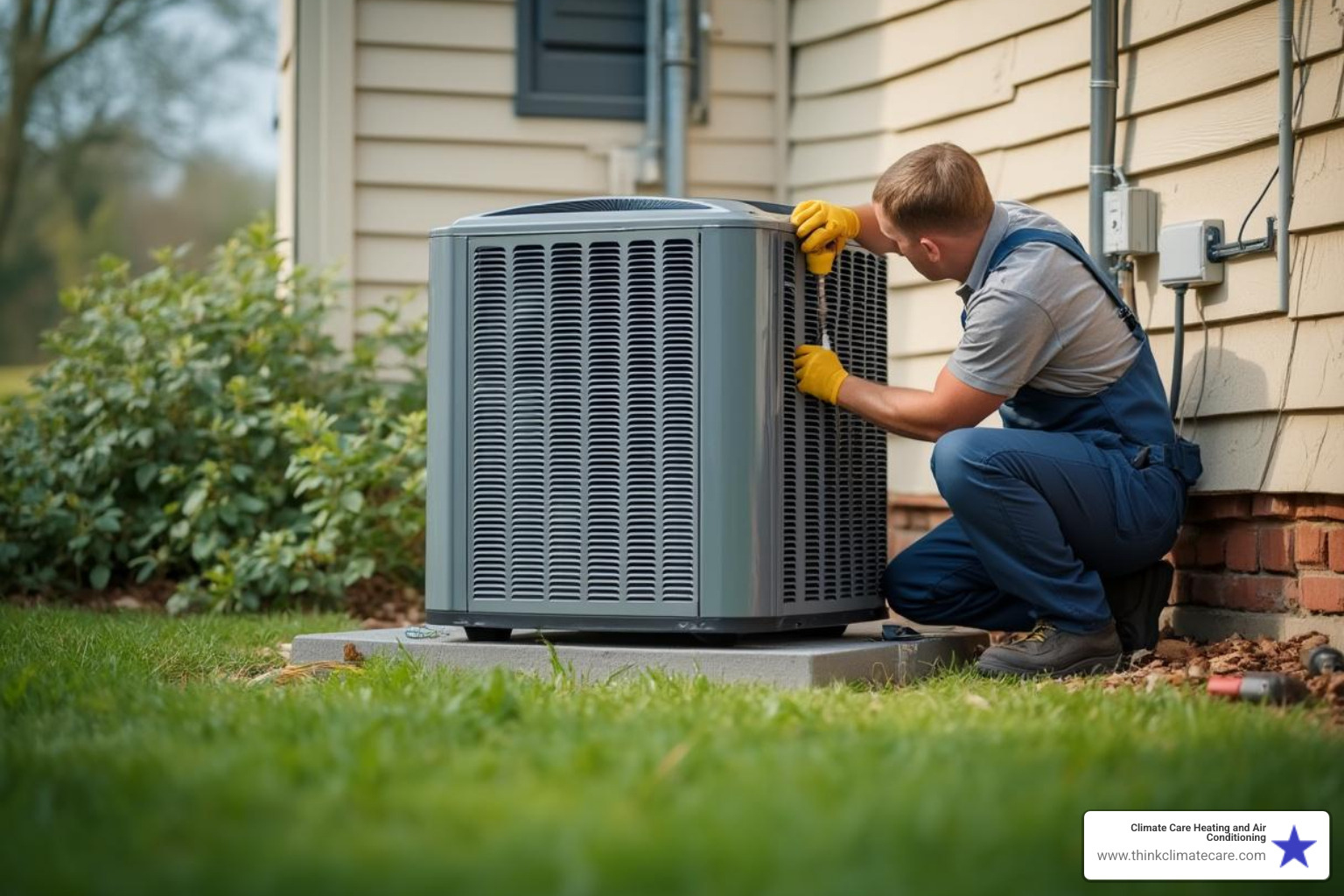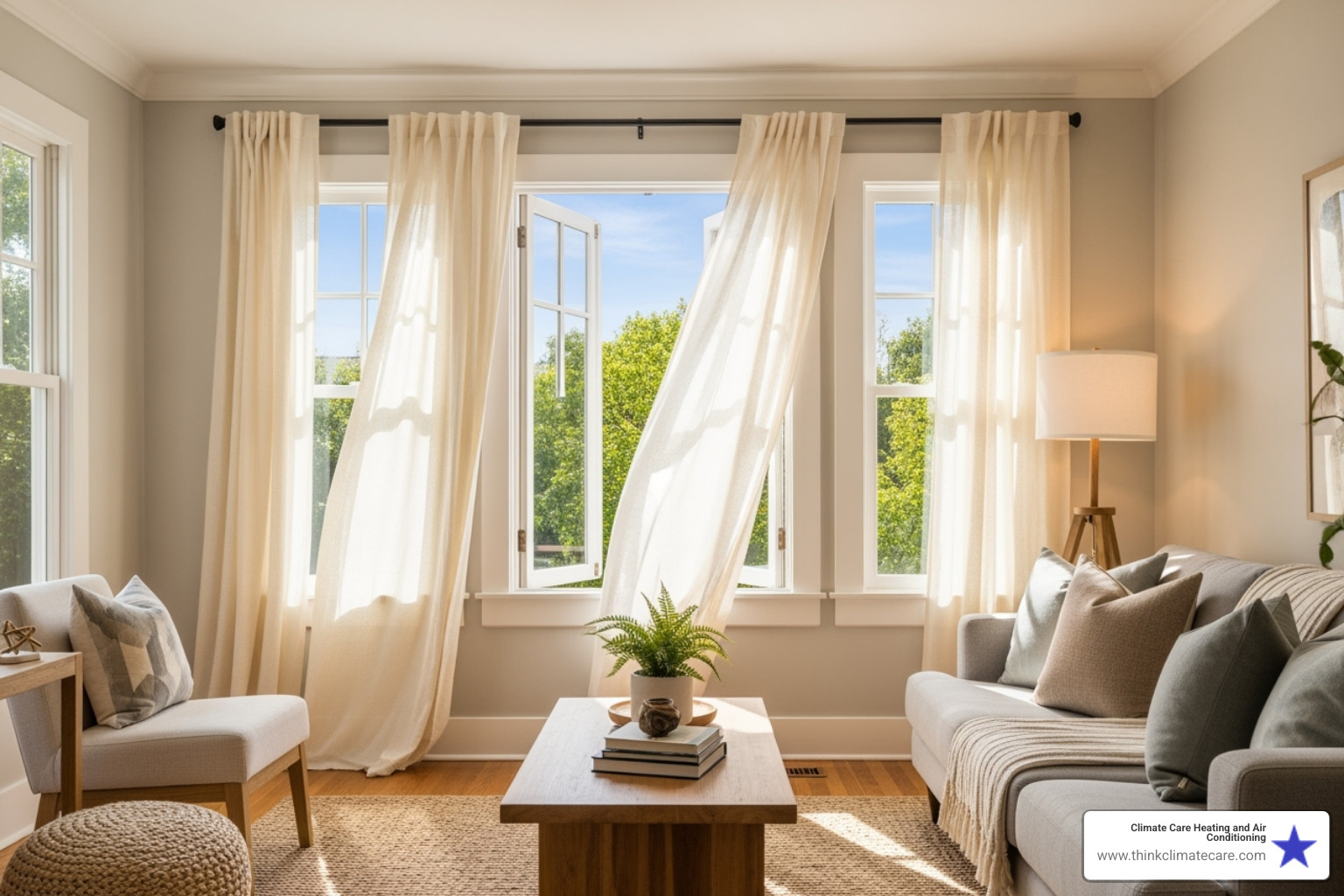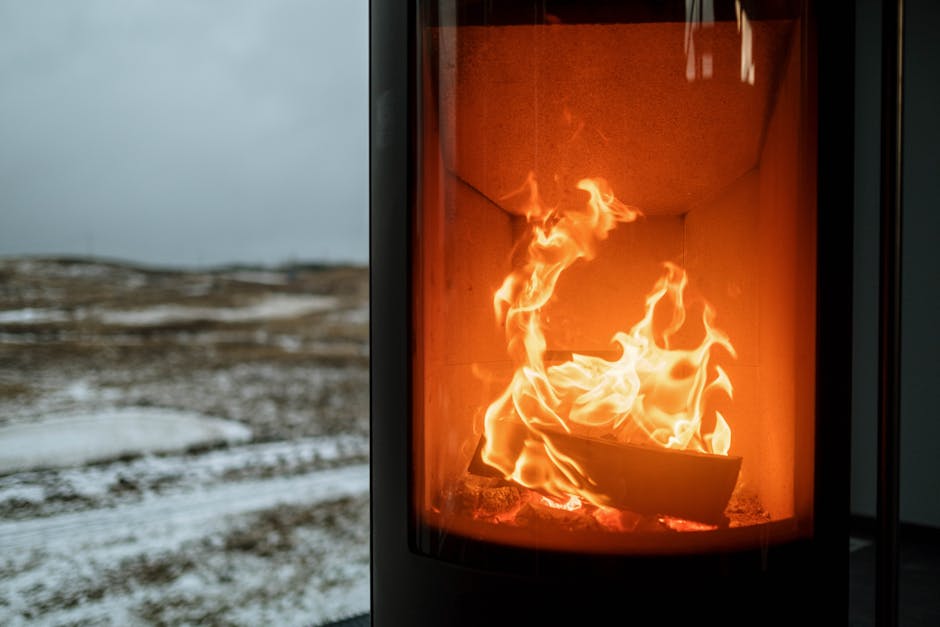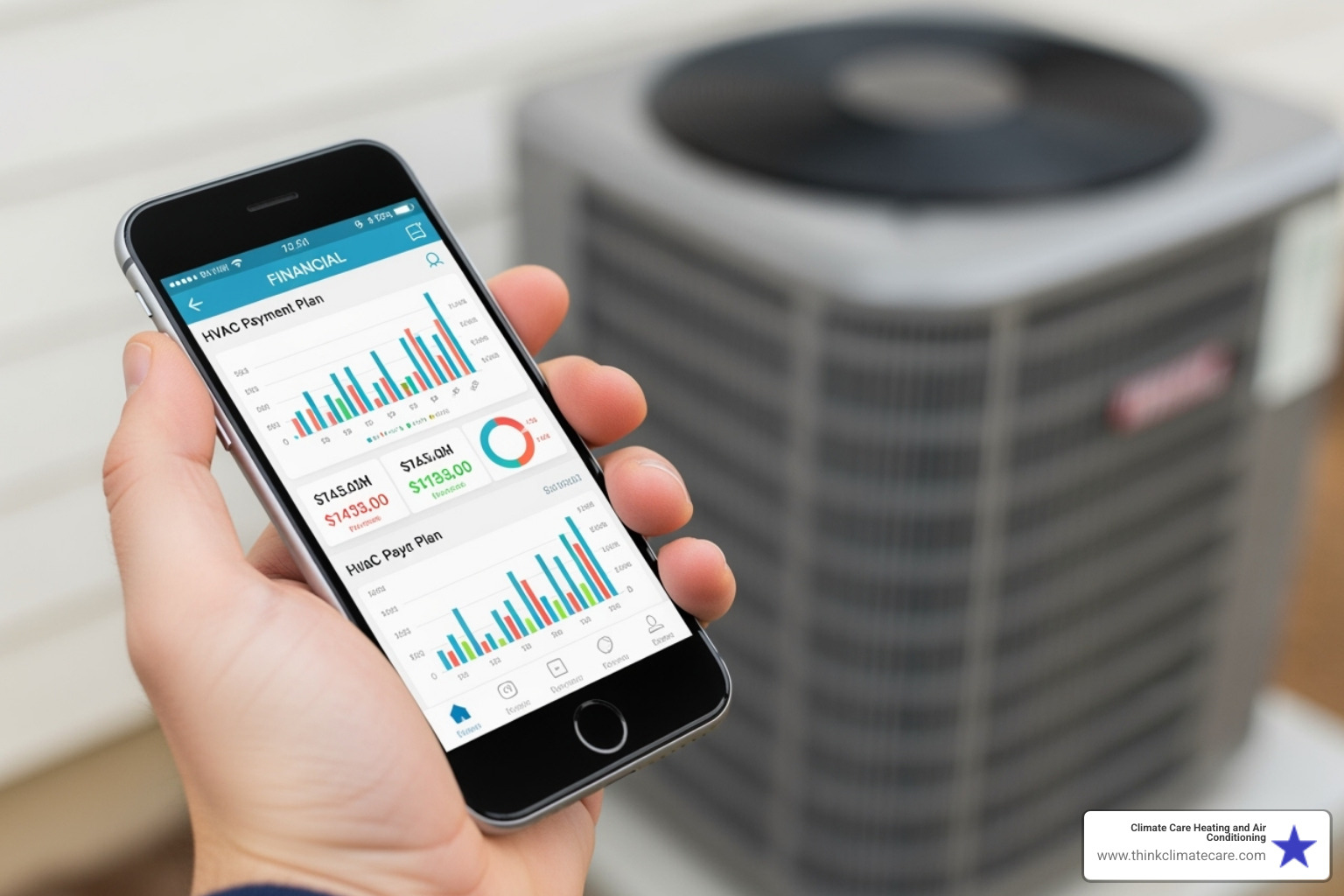Seamless AC Setup: A Homeowner's Handbook

Why Professional AC Installations Matter for Your Home
Professional AC installations are complex projects that ensure your system operates efficiently for its 15-20 year lifespan. When done correctly, a professional installation can cut your cooling costs by up to 40% while providing reliable comfort.
Key components of a successful AC installation include:
- System sizing: Proper load calculations ensure optimal efficiency and comfort.
- Professional installation: Certified technicians handle all connections safely.
- Quality equipment: High SEER-rated units provide better energy savings.
- Proper placement: Strategic positioning maximizes airflow and system lifespan.
- Code compliance: Professional work meets local regulations and protects warranties.
The installation process typically takes 4-8 hours. Attempting a DIY installation risks voided warranties, safety hazards, and costly mistakes that reduce your system's efficiency and lifespan.
Modern AC systems are built to last over a decade when properly installed and maintained. Whether you're replacing an old unit or installing one for the first time, professional installation ensures your investment delivers maximum comfort and energy savings from day one.

Before the Install: Choosing the Right AC System
Before the work begins, the first step in any AC installation is selecting the right system. This decision depends on your home's layout, budget, and efficiency goals. It's about finding the perfect fit for your specific needs.

Types of AC Systems Available
You have several excellent options for cooling your home:
- Central Air Conditioners: The most common choice for homes with existing ductwork. A central AC system uses an indoor and outdoor unit to distribute cool air throughout the entire home, providing consistent, whole-home cooling.
- Ductless Mini-Splits: Perfect for homes without ducts, for new additions, or for creating specific temperature zones. An outdoor unit connects to one or more indoor air handlers, offering high efficiency and quiet operation.
- Heat Pumps: These versatile systems both heat and cool your home by moving heat. In summer, they move heat out, and in winter, they reverse the process. They are highly energy-efficient, especially in moderate climates.
- Packaged Systems: These all-in-one units contain all components in a single outdoor cabinet. Often installed on a roof or concrete slab, they are a great choice for homes with limited indoor space.
Here's a quick comparison of two popular choices:
| Feature | Central AC | Ductless Mini-Splits |
|---|---|---|
| Ductwork Required? | Yes | No (or minimal) |
| Coverage | Whole home | Specific zones/rooms (up to 4 indoor units per outdoor) |
| Installation Time | Varies, can be longer if ductwork needed/modified | Faster, typically 1 day |
| Energy Efficiency | High, especially with high SEER ratings | Very high, excellent for zoned cooling |
| Cost | Can be higher upfront if ductwork is new | Generally lower per zone, but can add up for many zones |
| Noise Level | Quiet indoors (outdoor unit is louder) | Very quiet indoors (outdoor unit is louder) |
| Flexibility | Less flexible for individual room control | High flexibility for room-by-room temperature control |
Key Factors for Your AC Installations
When planning AC installations, we consider several critical factors to ensure your new system is a perfect match:
- SEER Rating: The Seasonal Energy Efficiency Ratio (SEER) measures how efficient an AC unit is. A higher SEER means greater energy savings. For our region, a rating between 14 and 18 offers a great balance of cost and efficiency, potentially cutting cooling costs by nearly 40%.
- Unit Size: Correct sizing is crucial. An undersized unit runs constantly, while an oversized one short-cycles, wasting energy and failing to properly dehumidify. We perform a detailed load calculation based on your home's square footage, windows, insulation, and more to ensure a perfect fit. Learn more in our guide: Mastering the Art of HVAC Sizing and Selection.
- Smart Features & IAQ: Modern ACs offer smart thermostats for improved control and energy savings. We can also discuss Indoor Air Quality (IAQ) options like advanced filtration or humidity control for a healthier home environment.
Is It Time to Replace Your Old Unit?
Look for these tell-tale signs that your old unit is ready for retirement:
- Age of the Unit: Most AC units last about 15 years. Efficiency drops significantly after 10-15 years.
- Frequent Repairs: If repair costs are mounting, a new system is often more economical.
- High Energy Bills: A sudden spike in cooling costs often points to an inefficient, aging unit.
- Inconsistent Cooling: Hot and cold spots throughout your home suggest your unit is failing or improperly sized.
- Unusual Noises or Odors: Grinding, squealing, or musty smells can indicate serious internal problems that warrant a new AC installation.
For more help deciding, read our guide: Repair or Replace: The Cost-Effective Choice for Your HVAC Needs.
The Professional Process for AC Installations
Once you've chosen your system, our team follows a refined, step-by-step process for every AC installation. We handle all the complex details, ensuring your system's performance and longevity.

Step 1: Initial Consultation and Home Assessment
Every successful AC installation begins with a thorough home assessment. We inspect your home's layout, insulation, and windows, and evaluate your existing ductwork for leaks or damage. Using precise sizing calculations, we recommend the best system for your needs and provide a clear, written estimate with no hidden costs.
Step 2: Site Preparation and Old System Removal
Next, we prepare the site by clearing the work area and protecting your home with coverings. We safely disconnect the old unit, following strict protocols for electrical systems and the environmentally-required recovery of refrigerant. We then handle the proper disposal and recycling of the old equipment according to all guidelines, such as those found in resources like this guide on disposing of old air conditioners.
Step 3: New Equipment Installation and Connection
This is the core of the installation. We strategically place the outdoor condenser on a stable, level surface for optimal airflow and install the indoor evaporator coil. We carefully connect refrigerant lines, ensuring they are secure and leak-free. All electrical wiring is done to code for safety and reliability, and we install a properly angled condensate drain to prevent water damage. With experienced professionals, an HVAC Replacement Can Really Be Speedy and Stress-Free.
Step 4: System Testing and Final Walkthrough
The job isn't done until we conduct a final walkthrough. We integrate and program your thermostat, then charge the system with the precise amount of refrigerant specified by the manufacturer. We test airflow in every room and perform a final inspection of all connections and safety controls. We conclude by educating you on your new system's operation and maintenance. A standard installation takes 4-8 hours, though complex jobs may take longer. The result is a properly installed system that will provide reliable comfort for 15-20 years.
Why Professional Installation is Non-Negotiable
While DIY AC installation might seem tempting, it's a job best left to professionals for critical reasons involving safety, efficiency, and your warranty.

The Dangers of DIY vs. The Benefits of a Pro
Attempting a DIY installation often voids the manufacturer's warranty, leaving you responsible for any repair costs. It also poses significant safety risks from high-voltage electrical work and the mishandling of regulated refrigerants. Professionals ensure the job meets local building codes, preventing fines and future issues.
Most importantly, an expert installation guarantees optimal performance through correct sizing, sealed ductwork, and precise refrigerant charging. Hiring a licensed, insured, NATE-certified technician provides peace of mind and protects your investment.
Common Mistakes and How to Avoid Them
Even professional AC installations can go wrong if not handled by diligent technicians. We are committed to avoiding these common pitfalls:
- Incorrect Sizing: An oversized or undersized unit wastes energy and wears out prematurely. We perform a detailed load calculation to ensure a perfect fit.
- Poor Unit Placement: Improper placement of indoor or outdoor units restricts airflow and reduces efficiency. We identify the optimal location for performance and longevity.
- Improper Refrigerant Charge: Incorrect refrigerant levels cripple efficiency and can damage the compressor. We use precise tools to charge the system to manufacturer specifications.
- Leaky Ductwork: Unsealed ducts waste a significant amount of cooled air and energy. We inspect and seal all ductwork to maximize efficiency.
- Faulty Wiring: This is a major safety hazard that can lead to system failure or fire. Our certified technicians ensure all wiring is safe and up to code.
- Thermostat Errors: Incorrect placement or wiring leads to inaccurate temperature readings and inconsistent comfort. We ensure proper installation and calibration.
Learn more about these issues in our guide: 8 Common AC Installation Mistakes and How to Avoid Them.
Budgeting, Savings, and Long-Term Care
A new AC system is a significant investment in your home's comfort. Understanding the costs, potential savings, and long-term care will help you make a confident decision.

Potential Costs of AC Installations
The total cost of AC installations depends on several factors: the type, brand, and efficiency (SEER rating) of the unit; labor for the complexity of the job; any necessary ductwork modifications; and local permit fees. We provide a detailed estimate that outlines all costs upfront. For more insights, you can visit our local service page: AC Installation Manteca CA.
Rebates, Tax Credits, and Financing
To make your new AC installation more affordable, we help you take advantage of available savings. These often include federal tax credits for high-efficiency, ENERGY STAR-certified systems, local utility rebates, and manufacturer promotions. We also offer flexible financing options for qualifying customers to help spread the cost over time, making comfort accessible without compromising your budget.
Post-Installation Maintenance for Longevity
To ensure your new AC runs efficiently for its full 15-20 year lifespan, proper maintenance is key. The most important DIY task is changing the air filter every 1-3 months to maintain airflow. Additionally, schedule an annual professional tune-up before the cooling season begins. During a tune-up, our technicians clean coils, check refrigerant levels, inspect electrical connections, lubricate parts, and clear the drain line. This proactive care prevents major breakdowns and maintains peak performance. For all your service needs, visit our dedicated page: Air Conditioning.
Frequently Asked Questions about AC Installation
We know you have questions about AC installations, and we're here with clear answers.
How long does a typical AC installation take?
A standard replacement typically takes 4 to 8 hours. This includes removing the old unit, installing the new equipment, and performing all necessary tests. Projects requiring new or modified ductwork may take longer. We will provide a clear and accurate timeline during your initial consultation.
What SEER rating do I really need?
The best SEER (Seasonal Energy Efficiency Ratio) rating for your AC installation balances upfront cost with long-term energy savings. Higher SEER ratings (16+) cost more initially but deliver greater savings over time. For our climate, a SEER rating between 14 and 18 often provides an excellent combination of efficiency and value. We'll help you choose the right rating for your budget and home.
Can my existing ductwork be used for a new AC unit?
Yes, in most cases, existing ductwork can be reused. However, a professional inspection is crucial. We will assess your ducts for proper sizing, leaks, or damage that could compromise the efficiency of your new system. If we find any issues, we will recommend the best solution—whether it's sealing, repairing, or replacing sections—to ensure optimal performance.
Conclusion
A professional AC installation is more than just a new piece of equipment; it's a crucial investment in your home's long-term comfort and energy efficiency. The right installation ensures your system operates at peak performance for years, saving you money and providing reliable cooling. Trusting experts means investing in peace of mind.
Here at Climate Care Heating and Air Conditioning, our NATE-certified technicians are committed to holistic HVAC care, focusing on performance, efficiency, and environmental standards. We guarantee your AC installation is done right the first time. Plus, our special membership plan offers great savings and ensures you get priority service when you need it most.
So, don't let the thought of summer heat stress you out. We're here to walk you through everything, making sure your new unit is just right for your home.
Ready to feel the amazing difference a professional AC installation can make? We're proud to serve so many wonderful communities across California, including Antelope, Carmichael, Ceres, Citrus Heights, Elk Grove, Elverta, Escalon, Fair Oaks, Folsom, French Camp, Galt, Lathrop, Lodi, Manteca, Modesto, Mountain House, Natomas, North Highlands, Oakdale, Orangevale, Patterson, Rancho Cordova, Rio Linda, Ripon, Riverbank, Rocklin, Roseville, Sacramento, Salida, Stockton, Tracy, Turlock, and Woodbridge.
Why wait for comfort? Schedule your professional AC installation in Sacramento today! Let us bring that unparalleled comfort right to your doorstep.
Customer Testimonials
Our customers love our service and support.













